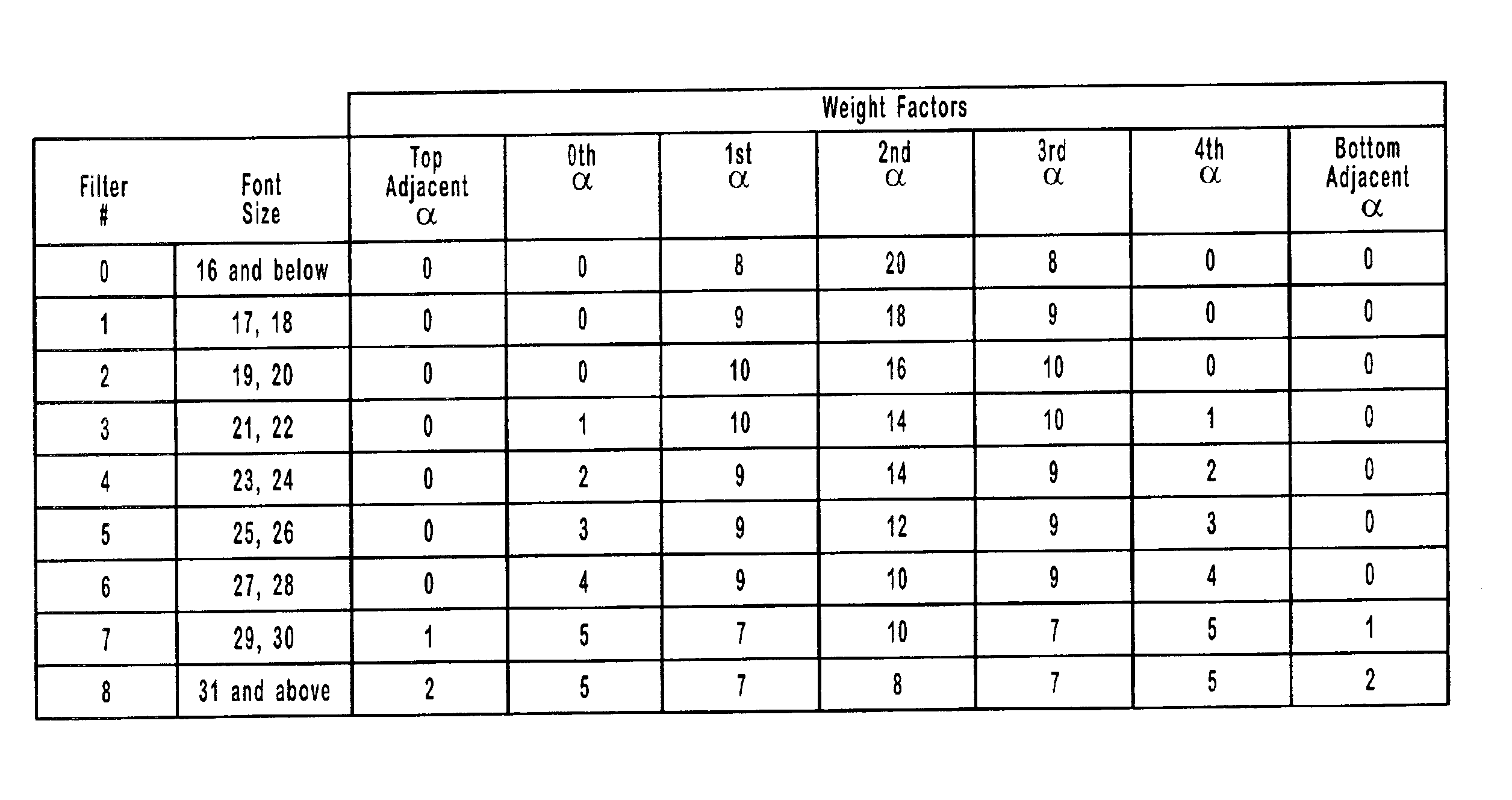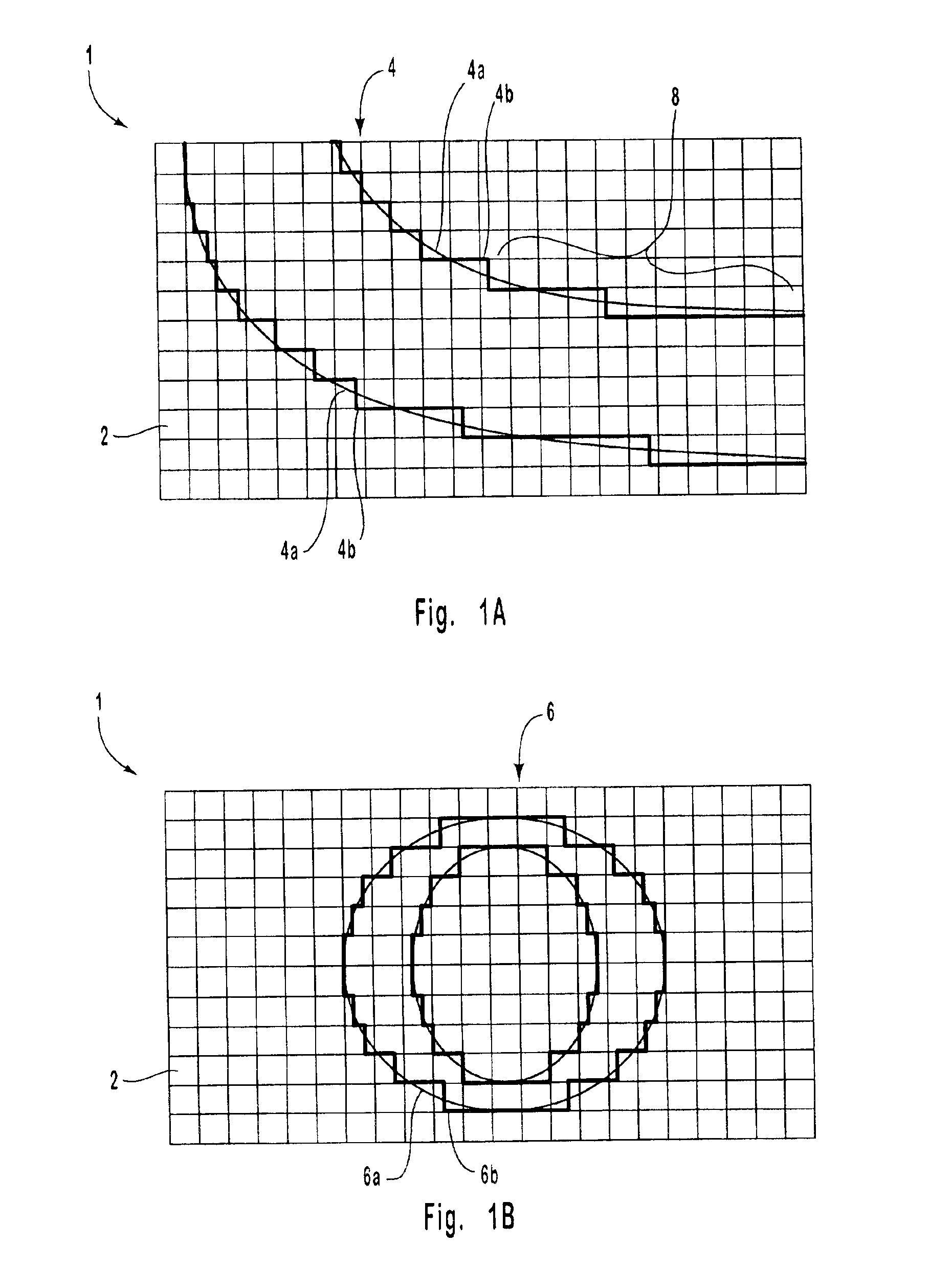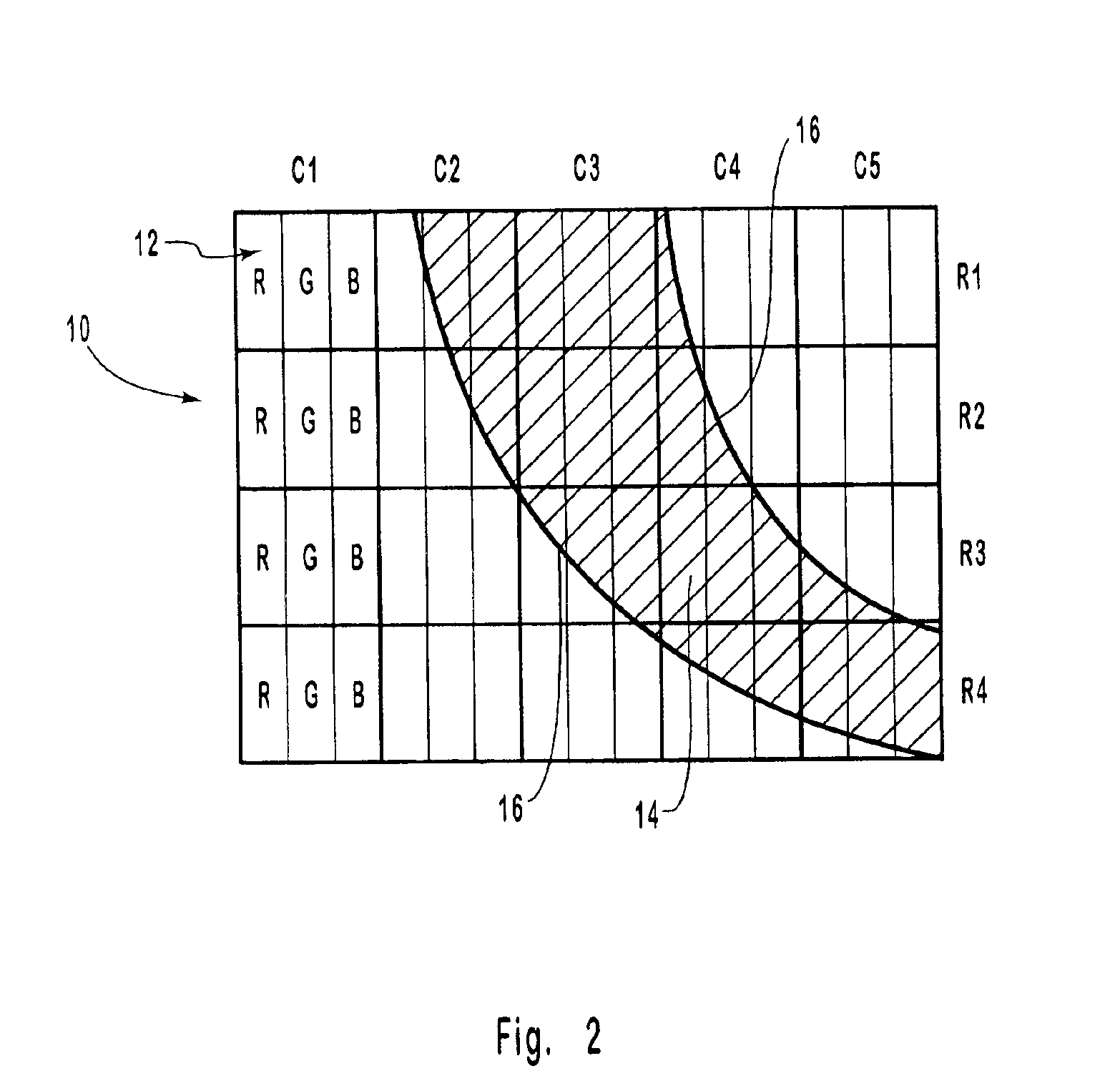Type size dependent anti-aliasing in sub-pixel precision rendering systems
a precision rendering and type size technology, applied in the field of rendering images, can solve the problems of distortion in the rendered image, the resolution of typical lcd display devices is lower, and the manufacturing requirements of lcd display devices are less, so as to achieve the effect of maintaining the desired contrast at the character edge and less readabl
- Summary
- Abstract
- Description
- Claims
- Application Information
AI Technical Summary
Benefits of technology
Problems solved by technology
Method used
Image
Examples
Embodiment Construction
[0025]The present invention extends to both methods and systems for rendering images. In particular, the present invention relates to selecting an anti-aliasing filter to be applied to a character rendered with pixel sub-component precision based on the font size of the character to be rendered. This enables the degree of anti-aliasing applied to the characters to be based on the unique characteristics of different font sizes. The anti-aliasing filter is applied in the direction parallel to the pixel sub-component striping. Large font sizes benefit from a large amount of anti-aliasing in the direction parallel to the striping of the pixel sub-components. As mentioned herein, the large number of pixels depicting character features of large font sizes makes gray scaled edges less noticeable. Small font sizes are rendered faint and less readable when a large amount of gray scaling is applied. Accordingly, by applying a small amount of anti-aliasing for characters at small font sizes, t...
PUM
 Login to View More
Login to View More Abstract
Description
Claims
Application Information
 Login to View More
Login to View More - R&D
- Intellectual Property
- Life Sciences
- Materials
- Tech Scout
- Unparalleled Data Quality
- Higher Quality Content
- 60% Fewer Hallucinations
Browse by: Latest US Patents, China's latest patents, Technical Efficacy Thesaurus, Application Domain, Technology Topic, Popular Technical Reports.
© 2025 PatSnap. All rights reserved.Legal|Privacy policy|Modern Slavery Act Transparency Statement|Sitemap|About US| Contact US: help@patsnap.com



